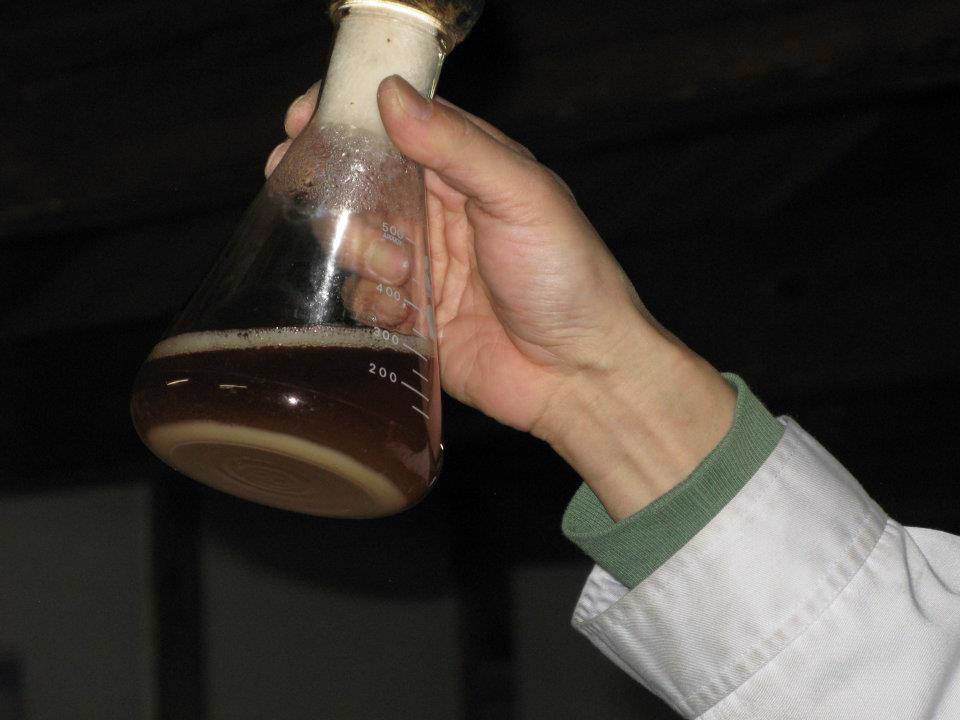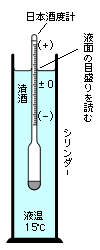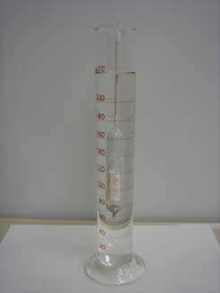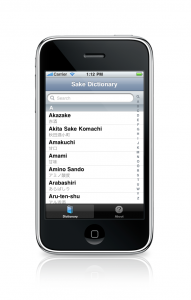|
|
|
March Greetings,
Well, as is usually the case, the tempo of the first two months of the year were a bit too much, and I was not able to get out a February newsletter. My apologies! I always try to pull it off, but rarely does it actually happen.
And although that torrid pace continues, I will get no sympathy from the sake industry, which is zipping along at a blistering pace of its own. Brewers around Japan can see the light at the end of the tunnel, faint in the distance though it may be.
Things are indeed beginning to turn up again in the sake world, both domestically and overseas. While gains are modest, sake is starting to move in a postive direction again on all fronts.
In particular, note the announcement of Sake Professional Courses in New York City in May, more about which is here. Reservations are being taken now!
Warm regards,
John
|
|
There’s No Such Thing as Junmai Ginjo-shu
...or so say some
While visiting an old, very prestigious brewer, I was looking at their lineup. There was no junmai amongst their ginjo offerings. While they had their share of junmai-shu itself, once you got into their ginjo world, there was only non-junmai ginjo products.
I inquired as to why this might be, since it was clearly not just a coincidence. I actually sorta knew, but wanted to hear it from the horse’s mouth, so to speak. And since no reason was being openly offered, I dared to ask.
I promptly got torn a new… well, let’s just say I was instructed as to the nature of my misperceptions.
By the way, Ginjo, in this usage refers to all types of ginjo, i.e. including daiginjo manifestations (basically, ginjo to dai for, so to speak!). And non-junmai here refers to types of sake to which a li’l bit of pure ethyl alcohol (most often distilled from sugar cane) has been added after fermentation, not for economical reasons, but for sound technical reasons. These include, but are not limited to, drawing out more flavors and aromas, and improved shelf life.
Back to their retooling of my perceptions, I was told: “There is no such thing as
junmai-ginjo. Not here anyway. Never has been. And those that make it do not really understand what ginjo is all about. Nor do we care what the Ministry of Taxation says on the issue; their priorities are different than ours.” They expounded a bit, but the point was well taken.
And that point is that super premium sake like ginjo and its to-die-for manifestation daiginjo were developed with the addition of alcohol as an integrated and necessary step. The whole “junmai” version came later, and this particular brewer’s point is that the whole hullabaloo about junmai being more pure came later, and is actually not so traditional, as far as the brewing industry itself is concerned. And who’s to argue with them?
Certainly not I.
I am definitely
not anti junmai at all. Far from it; very far from it. Nor do I question the validity of junmai ginjo and junmai daiginjo. I’m just sayin’…you know. I’m just sayin’ that
non-junmai types – those made with a bit of pure, distilled alcohol added during the process – are not only valid, not only worthy of our support, but as far as ginjo is concerned, one could say that they are even more traditional. Or at least hold some brewers.
 |
|
I dunno… I guess it seems to me that, in the sake brewing process, yeast makes alcohol. And some brewers, for some sake, will then add alcohol. It does not fortify the product, as just a little bit is added, and more water is added later to bring the alcohol content back down to “normal” levels. And what is added is pure ethyl alcohol. It’s the same stuff that is already in there. They just add a bit to
temporarily (remember that!) raise the overall alcohol content for technical reasons. Just because it was made outside of the process and brought in does not make it unsavory. And no matter what some folks insist, no one can really tell the difference, at least not in premium sake (remember that too!).
So, I am, if anything, anti-anti-junmai, and double negatives notwithstanding, that
almost means pro-added-alcohol.
Why? Because very often it makes the sake better – better flavor, better aromas, better shelf life, and very often, a better value. What’s to diss?
All I am saying is give non-junmai a chance; especially in the realm of ginjo.
|
|
The Nihonshu-do: Fuhgedaboudit
...unless you are brewing
Recently, I received correspondence requesting me to gather the nihonshu-do for a handful of sake that I help represent. The company requesting this information sought it, presumably, to allow their sales staff differentiate themselves from their competition, as they are in a country just starting to get into sake, perhaps to make it seem easier for the customers to select products to carry.
 |
|
Most readers surely recall that the nihonshu-do, or SMV as it is sometimes called outside of Japan, is a number that is supposed to indicate sweetness or dryness in a sake. It generally runs from -3 to +10, and “higher is dryer.” However, in reality, the number is almost useless except in its extreme manifestations, since a handful of things like acidity, temperature, perception, aromas, water, glassware, and certainly accompanying food all add about 20 percent error each. That last sentence alone could potentially yield 140 percent error in one sip. Hence the “almost useless” wording.
But they wanted the numbers nonetheless. Note, many brewers put this number on the bottle (which is part of the problem, actually, as they entice consumers to pay attention to it), but others do not. So I dutifully contacted all the brewers and asked them for the nihonshu-do of the relevant products. All swiftly complied and sent me the data – save one.
 |
|
That “one” was dreadfully slow in getting back to me. Not that I was surprised; I more or less had expected that based on past dealings with them. In the sake world, I have learned, the speed of response from a kura is proportional to the length of their history. Backing gingerly away from the brink of that diversion, when his response did come, it was in the form of a refusal to comply. And it came with accentuated with sharp wording.
In short, he tore me a new… well, let’s just say I was instructed as to the nature of my misperceptions (a recurring theme with me).
“John, we do not make that information public. You should know that. It is irrelevant to the nature and quality of a sake, and serves only to confuse folks. And that is not just us; the industry has been moving away from this for years now. You are not helping things by promoting this at this stage…”
Yes, I responded politely, I did realize that, and I always do my best to make it clear the nihonshu-do is not worth much attention, but the customer wanted it, and right or wrong, refusing to cooperate would mean that your sake might not be available there, so that like many things in life, a compromise is at least worth considering.
This thought was scoffed at, and the scathing reprimand continued for another unbearable minute or so. Of course, he was right. And it seems the only way to support that correctness is to convey that to consumers themselves as often as needed.
So here goes: Except in its extreme manifestations, the nihonshu-do is almost meaningless in terms of telling us what a sake will taste like, i.e. sweet or dry. In fact, very seriously, it was never intended for consumers’ use.
 |
|
The nihonshu-do is the specific gravity, i.e. the density of the stuff compared to that of pure water. And during the brewing process, as that changes, it tells brewers how much sugar has been converted to alcohol. As the density of the fermenting mash decreases, the number indicates decreasing sugar (which adds to density) and increasong alcohol (which reduces density). And even that is a borderline-gross simplification. The final number, i.e. the nihonshu-do of a completed sake, is an aimed-for number that is part of the recipe, so to speak. But it is one of a gazillion factors, and not overly indicative of one single aspect of the flavor profile.
So, again, the nihonshu-do was never intended for consideration on the part of consumers. Am I saying to totally ignore it? Nah. Let’s not go that far. I wouldn’t go out of my way to prevent it from entering my sphere of consciousness! But I am saying don’t worry about it. And I am for sure saying don’t make a big deal out of it.
The point here is not to bad-mouth the nihonshu-do, or those that choose to pay attention to it. Rather, the true gist really is to encourage people to trust their own palates and experiences with sake more than anything else. That's what it's all about.
|
 Announcements and Events Announcements and Events
Sake Professional Course
New York City, May 8 to 10, 2013
The next Sakee Professional Course will take place May 8 to 10 in New York City at a private venue in the Murray Hill neighborhood of Manhattan.
More about the seminar, its content and day-to-day schedule, can be found here.
The Sake Professional Course, with Sake Education Council-recognized Certified Sake Professional certification testing, is by far the most intensive, immersing, comprehensive sake educational program in existence. The three-day seminar leaves "no sake stone unturned."
The tuition for the course is $825. Feel free to contact me directly at sakeguy@gol.com with any questions about the course, or to make a reservation.
~~~~~~~~~~~~~~~~~~~~
Sake Education Council Website
Please take a moment to check out the website for the Sake Education Council, the organization behind the Certified Sake Professional and Advanced Sake Professional certifications. We plan to grow steadily, strongly and continually, and we will need the support of all those that love sake to do so. Follow us through the "usual suspects" of social media.
Sake Homebrewer's Online Store
Please be sure to check out Homebrewsake.com for supplies, information and a forum, including lots of supporting information on everything from recipes to history. I have been meaning to mention this site and the gentleman behind it, Will Auld, but have repeatedly forgotten in past newsletters. The site is replete with instruction, augmented with videos, schedules, and more. If you are even remotely interested check this site out right away.
Don't forget the archives!
Older editions of this newsletter are archived here.
Really old editions are archived here.
|
 Sake Education Central Sake Education Central
Sake's Hidden Stories and The Sake Notebook are now available for the Kindle, Nook and iBooks!
The Sake Notebook is now available for the Kindle as well as the Nook. And now, it is available for iBooks on iTunes as well!
Sake's Hidden Stories too is now availabe on the Kindle as well as the Nook. And now, it is available for iBooks on iTunes as well!
Both are
less expensive than their original pdf version too. Now is your chance to learn more about sake from your phone or tablet! Check 'em out!
Sake Dictionary App for the iPhone, iPod and iPad
"For 99 cents, this app ROCKS!!"
-a satisfied customer
There you are, perusing a menu, or standing in front of a shelf of great sake, or perhaps reading a sake newsletter… and up pops one of those hairy, pesky sake terms in Japanese. You know you have heard it many times, but dammit, you just cannot remember what it means now…
No problem! Just whip out your iPhone or iPod and fire up your trusty old version of
The Sake Dictionary. In a matter of seconds, you’ll be amongst the cognoscenti once again. But… if only you could pronounce it properly. Now that would really rock!
Done! Just tap on the term and you will hear a clear example of how to pronounce the term in Japanese. Repeat it a couple of times and the term is yours for eternity, to toss about and impress your mates.
What’s more, it’s
less!
Less than what it cost before, much less. Like less than one-seventh less. For a limited time only, the audio-enhanced version of The Sake Dictionary iPhone app is available for a mere $0.99.
|
 |
|
|
The Sake Dictionary is a concise little package of all the terms you might ever come across when dealing with sake. Almost 200 of them - including sake grades, rice variety names, seasonal sake terms, special varieties, rare types, post-brewing processing words and the myriad terms used in sake production - many of which are not even familiar to the average Japanese person on the street - are listed up here with concise, useful and clear definitions and the written Japanese version as well. And now, with the new audio component, you can listen and learn just how to pronounce those terms properly.
Start to toss around Japanese sake terms like you were raised knowing them! Gain a level of familiarity hitherto unimaginable! Avoid frustrating paralysis when faced with a sake-related purchase!
Get your copy of The Sake Dictionary now and never be confused by sake terms - or how to pronounce them - again.
Get it here: http://itunes.com/apps/sakedictionary
(Note if you have already purchased it, this upgrade to the audio version is free. Just go to iTunes and get it!)
|
Are you not getting this newsletter? I realize that is like asking that
"those not present please raise your hand," but for future reference, should you spontaneously stop receiving this newsletter, please go here and sign up again. Should that not work, please go to www.sake-world.com.
Email newsletter services are very careful not to be considered spam enablers, but the problem is that often very valid email addresses come back bounced as invalid. It is an unavoidable problem. So if you or someone you know is not getting this, or stop(s) receiving it inexplicably, please do take a moment to double check that you are still subscribed.
Sincere apologies for the hassle, mixed with gratitude for reading this newsletter. |
I hope you have found the above information helpful and entertaining. For more information about all things sake, please check out www.sake-world.com. Until next month, warm regards, and enjoy your sake. 
Questions and comments should be directed to John Gauntner, at this email address.
All material Copyright, John Gauntner & Sake World Inc.
Regards,
John Gauntner
Sake World, Inc
 . . 
|
Greetings to all readers,
Well, it’s summer here in Japan. Actually, we are still firmly  ensconced in the rainy season, but it will be over soon, and while the rain will go away the infernal humidity - that oppressive, suffocating humidity - will still be here. You can cut it with a knife. ensconced in the rainy season, but it will be over soon, and while the rain will go away the infernal humidity - that oppressive, suffocating humidity - will still be here. You can cut it with a knife.
But it is that very humidity, that wonderful, life-giving humidity, that makes koji mold so common here, and over the centuries, made sake what it is. So let us give thanks for humidity and the mold it supports.
But let’s sleep with the dehumidifier on as well.
Enjoy whatever season is upon you, and enjoy the newsletter as well,
John
|
|
